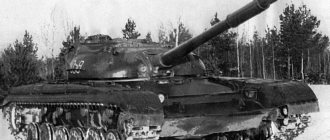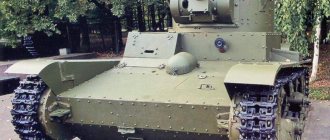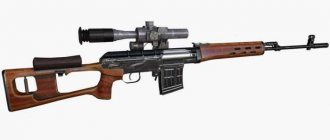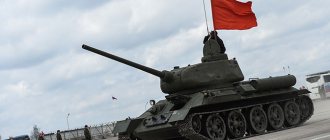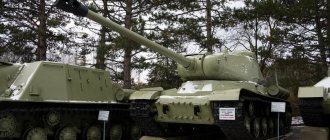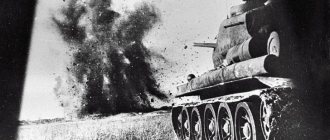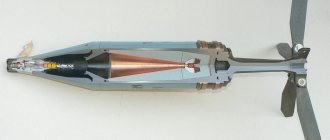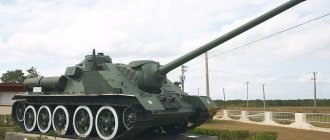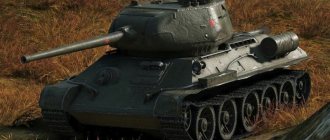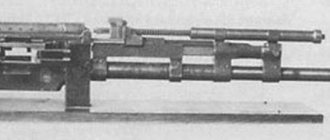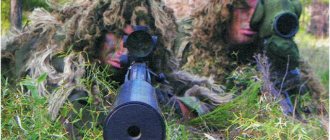ZIS-5 is a legend of the Soviet automobile industry with a payload capacity of three tons, has many modifications and was produced in different versions until 1965. This is one of the main trucks used by the army during WWII. Below we will consider what the features of transport are and for what purposes it was used. Let's look at the technical characteristics and main modifications.
History of the creation of the ZIS-5
The predecessor of the new truck was the AMO-2 car, which was produced between 1930 and 1931. The machine is assembled from US components used for the AutocarDispatchSA truck. Later, the AMO-3 version appeared, which was assembled using domestic spare parts.
Important
The ZIS-5 car became the next step in the domestic automotive industry. As in the case of AMO-3, only domestic parts were used in production.
The first batch of cars left the assembly line in 1933 in the amount of 10 pieces. In 1934, active production of the truck began, which made it possible to sell 65 vehicles. Subsequently, two and a half dozen modifications were created on the basis of the ZIS-5, and 19 of them were produced in large quantities.
Officially, the production of the truck lasted from 1933 to 1958, and taking into account the improved version of the vehicle (UralZIS 355 M) - until 1965. Representatives of this series can be found for sale in good condition today.
Monuments
ZIS-5 BM-13
- Sevastopol, diorama on Sapun Mountain
- Odessa
- Lebedin, Mikhailovka village
- Korsun-Shevchenkovsky, Museum of the History of the Great Patriotic War
- Armyansk-Krasnoperekopsk highway near the gas station
ZIS-5
Monument in Kamensk-Shakhtinsky
- Bobrinets
- Gayvoron
- Granitnoe village
- Donetsk
- Dnepr, Kirov Ave., 111
- Evpatoria, st. 2nd Guards Army
- Zhmerinka
- Zaporozhye, Moscow-Simferopol highway
- Zaporozhye st. Vybskaya 8 club "Phaeton"
- Kamensk-Shakhtinsky st. Osvobozhdeniye, 46, at the entrance of OJSC "POGAT"
- Kyiv, Moskovskaya square
- Kirov, st. Rosa Luxemburg (at the fire station)
- Mezhevaya
- Melitopol, ATP
- Nikolaevka village
- Obukhov, ATP-13238
- With. Fertile
- Primorsko-Akhtarsk, Krasnodar region, district museum
- Sevastopol, diorama on Sapun Mountain
- Skvira
- Kharkov, Samokhod club
- Kherson, Nikolaevskoe highway
- Chernigov, st. Lyubochenko
- Samara, crossroads st. XXII Party Congress and st. Kr. Kommunarov
- Podborovye village, Leningrad region.
- Tver, Oktyabrsky Prospekt
- Chita, Romanovsky tract
- Tyumantsevo, Altai Territory, st. Zarechnaya, 4.
ZIS-5V
- Tula (at the site “At Katyusha’s”)
- Kharkov, Samokhod club
- Miass, Predzavodskaya Square
- Simferopol, Crimean Club of Vintage Cars “Astra”
How the ZIS-5 was used in war and in peacetime
Thanks to a large number of modifications, the truck became widespread in war and peacetime. During the war they were used to solve the following tasks:
- Transportation of military cargo and engineering equipment.
- Acting as artillery tractors.
- Radio technical station with a range of up to 1000 km.
- Automobile repair shops.
- Fuel service vehicles equipped with fuel containers. They were equipped with special pumps or went without them.
- Aerodrome and balloon transport.
- Engineering vehicles.
- Chemical service trucks.
- Machine gun and cannon vehicles.
- Sanitary and staff equipment.
During the war, many alternative options were proposed. By 1933, the number of cars produced reached 65 per day.
In peaceful life, the ZIS-5 vehicle was usually used for transporting goods, as a milk tanker, for transporting fuel and solving other problems. Here a lot depended on the superstructure used instead of the body.
Cabin
During the war, engineers were faced with the task of simplifying the cabin design as much as possible.
The visibility of the road was not as good as on today's truck models, but at that time there was not much choice. You can also forget about comfort. To fit between the steering wheel and the driver's seat, you need to be very lightly dressed. There was no soundproofing in the car - you had to shout to hear your interlocutor.
The cabin was equipped with a ventilation system, but there was no stove. And if the windows froze, we had to use ventilation. However, the cabin was perfectly ventilated naturally - there were many cracks.
Technical characteristics of the three-ton truck
The popularity of the ZIS 5 truck is due to its unique technical characteristics and operational reliability. The main parameters include:
| Specifications | Values |
| Drive unit | rear |
| Engine location | front |
| Number of seats | 2 (cabin), 25 (body) |
| Dimensions (LxWxH), m | 6.006x2.235x2.16 |
| Total weight, t | 6,1 |
| Load capacity, t | 3 |
| Engine | ZIS-5/5M |
| Fuel type | petrol |
| Volume, l | 5,55 |
| Power, hp | 73 / 77 |
| Max. speed, km/h | 60 |
| Combined cycle consumption, l/100 km | 33 |
| Tank volume, l | 60 |
| Ground clearance, cm | 26 |
We will pay special attention to the main components of the three-ton truck.
Engine
The truck was equipped with a 6-cylinder and 4-valve power unit with a carburetor. The engine has a cylinder diameter of 10.16 cm and a piston stroke of 11.42 cm. Maximum power is achieved at 2300 rpm. The ZIS motor has undergone minor changes in comparison with the AMO motor. The main difference is the diameter of the cylinders and the elements associated with this unit (cam shaft, valve, crankshaft, connecting rods, etc.).
An American Hercules engine was used as a prototype for production. It became widespread and was actively installed on many trucks. Its advantage is due to its reliability, ability to operate in difficult operating conditions and at maximum load.
Pistons and cylinders are made of high quality cast iron. The camshaft is located to the right of the crankcase and is rotated by the crankshaft. The latter also powers the water pump and generator. The engine fuel pump is powered by the camshaft. All mechanisms operate through a gear connection. In this case, the belt drive was used only for the fan. A special felt filter was used to clean the oil, so the lubricant was changed every 1200 km, and not every 500.
The valves of the ZIS-5 power unit have a built-in adjustment device. But the advance torque was still set independently by moving the lever on the steering wheel hub. The engine is flexible in operation and can be used on AI 55-60 gasoline.
It does not require frequent gear changes and can travel in 1st gear for a long time, which is why many have compared the truck to a tractor. The reliability of the engine is confirmed by its popularity. In particular, it was installed on YAG 4/6 trucks and was actively installed on export vehicles that were sent to Iran, India and Turkey.
Frame and transmission
The frame of the ZIS-5 truck has a high safety margin and can cope with a load of 3 tons and its transportation in the most difficult conditions. As for the plant's old gearbox, it refused to work with the new engine, so the plant workers had to create a new transmission. She received four forward speeds (not three, as before), as well as one reverse. In this case, the front gears had the following gear ratios - 6.6, 3.74, 1.84 and 1.0.
The first speed is used when driving off-road or with heavy vehicle loads. By the way, the car is distinguished by excellent cross-country ability, thanks to a low number of engine revolutions, a well-thought-out transmission and a ground clearance of 26 cm. The ZIS-5 passed in those places, other cars could not cope.
The gearbox gears in the new “box” are connected to the intermediate shaft not in the classical way, but using splines. This made it possible to improve the alignment of the gears. The old version had a simplified design, where the gears were mounted on the bottom of the car. Separately, we note that the frame of the ZIS 5 truck is installed on a powerful suspension with longitudinal springs mounted on earrings and threaded fingers.
Additionally, mechanical shock absorbers of a lever type are mounted to increase comfort. At the rear, spring packages with 10 sheets and 7 “sprungs” were used. However, there are no shock absorbers on the rear axle.
Clutch
ZIS-5V wartime
One of the modifications of the truck is the ZIS-5V. The letter “B” here indicates that the equipment is military. In total, more than 84,000 vehicles were produced during the war, which were produced between 1943 and 1946. The manufacturing process used a lighter cabin weighing 124 kg, made using wood and plywood. Regular nails were used to fasten the sheathing boards. The upper part of the cabin is made of slats, over which leather substitute has been stretched.
Simplification of the ZIS-5V design also affected the wings. They are made using conventional bending, and sheet metal was used as a base. The brakes remain only on the rear axle, and the flatbed can only be opened from the rear. The steering wheel rim is wooden.
At the same time, some stamped spare parts were made using cast iron. When producing the 5B version, everything possible was done to simplify and reduce the cost of the design. This was due to the need to reduce costs and speed up the production of vehicles for military purposes.
By the way, the abandonment of the front brakes did not lead to a decrease in reliability, because more pads were installed at the rear. As for the main technical characteristics, they are almost no different from the “civilian” version.
Soldier, worker, legend
In 1941, an air raid was carried out on the plant named after. Stalin. It was ordered to completely remove all production. In 1942, production was resumed again. These trucks performed a variety of functions in the rear and at the front. There were no buses yet, but 25 people could fit in the back of this car. They carried ammunition and various equipment. These vehicles transported Red Army soldiers to Berlin and back.
In Moscow, the truck was produced until 1948. The last batch was equipped with a new unit - ZIS-120. In total, about a million of these trucks were created in the Soviet Union.
So, we found out the history of creation and technical characteristics of the ZIS truck.
Pre-war and post-war modifications
The ZIS-5 truck gained popularity not only because of its use in wartime, but also because of the availability of pre-war/post-war models. The main pre-war equipment built on the basis of a 3-ton chassis includes:
- ZIS-6 is a vehicle with six wheels and a 6x4 wheel arrangement. Features increased cross-country ability. Load capacity is 4 tons when traveling on good roads and 2.5 tons when driving off-road. The car was produced in the period from 1934 to 1941, and the total number was about 21.2 thousand. At the beginning of the war, the truck was equipped with BM 13/8 units. The truck is equipped with a ZIS-5 engine and a classic transmission. The total number of cars produced is about 21,000.
- ZIS 8 /16/16S - buses assembled on the basis of the ZIS-5, but having their own chassis. For example, the ZIS-8 chassis had a longer base and was 4.42 meters long. This feature required the installation of an additional shaft and an intermediate support in the cardan. The on-board voltage was increased to 12 V. Models 16 and 16C used upgraded engines with an increased compression ratio and a power of up to 88 horsepower.
- ZIS-10 is a truck tractor, produced for four years - from 1938 to 1941. In total, about 770 vehicles were made, including four prototypes in 1935. The wheelbase is the same as the ZIS-5. The tractor could transport up to 3.5 tons, and with a semi-trailer - up to 6 tons. The tank capacity was 65 liters, and consumption was about 38 liters per “hundred”. This volume was enough to cover 170 km.
- ZIS-11 is a fire truck with an extended chassis, operational for three years (from 1934 to 1936 inclusive). In total, a little more than 3,000 units were produced from the assembly line. The same wheelbase was used here as in the ZIS-8. Among the features, it is worth highlighting the presence of truck-sized springs and 6 V electrics. The main feature was the presence of a 60-liter tank, a reinforced engine cooling system, as well as another box in the transmission.
- ZIS-12 is a truck with a 4x2 wheel arrangement and a longer chassis. It could also carry up to three tons of cargo, but technically it differed little from the “six”.
- ZIS-32 is an all-wheel drive truck with a 4x4 formula. About 150 vehicles were produced in 1941. The main feature was the transmission, an enlarged tank and, accordingly, a greater power reserve of up to 330 km.
- ZIS-13 is a gas generator machine created on a longer base and working on wood. It had a base of 4.42 m and a power of 45 horsepower. The vehicle could transport up to 2.5 tons. In the period from 1936 to 1939, about 2,600 cars were produced.
As for post-war modifications, it is worth highlighting the following machines:
- ZIS-19 is a dump truck produced in two periods (before the war) and after it. In the second case, the production time is from 1947 to 1949.
- ZIS-21 is a gas generator version of the truck, powered by wood blocks. After the war, it was produced at the Ural plant. Just over 15,000 units were made.
- ZIS-50 is one of the military modifications of the truck, which became a transition model for the ZIS-150. In just two years from 1947 to 1948, about 14,000 units were produced.
- ZIS-LTA is a half-track timber transport vehicle with increased cross-country ability. Created in 1949. KT-12 components and assemblies were used here.
- UralZIS-5M is a truck that has retained the features of the military version. It has an optimized braking system and more modern optics.
- UralZIS-355/355V. Appeared in 1956, combining many technical solutions for that period.
- UralZIS-355M is the latest modification of the three-ton truck, which has been produced since 1958.
Description of design
Hull and armor
The tank is made according to the classic layout with rear-mounted drive wheels. Its hull consisted of cast (bow, turret and stern) and rolled (bottom, sides and bulwarks) armor parts connected to each other by goujons. The tank's turret is cast and cylindrical. Its rotation was carried out using a hydraulic drive or manually.
Until 1941, it was considered the most powerful English tank: the thickness of the frontal armor of its hull reached 78 mm, the side armor was 70 mm, the frontal armor of the turret was 75 mm thick, and the chassis was covered by a bulwark.
Engine and transmission
The engine used in vehicles supplied under Lend-Lease to the USSR was a paired installation of two Leyland diesel engines. The right and left engines were non-interchangeable and differed in the location of the auxiliary mechanisms. Each of the motors, as well as the power supply, lubrication, cooling and starting units were completely independent and worked independently of each other. To facilitate cold starting of diesel engines, an ether carburetor with ampoules was used. It had a mechanical transmission, a planetary gearbox, and side clutches as turning mechanisms. The Matilda transmission included: a clutch for each engine, a transverse gearbox, side clutches, final drives and the shafts connecting them. The tank was equipped with a single-plate dry clutch of the automotive type.
Chassis
The Matilda's chassis was borrowed from the A7 tank and had a "scissors" type suspension (or, as they said in England, "Japanese type") - balanced with spring shock absorbers. 10 road wheels on board with metal bands were blocked in pairs into five bogies. In addition, there was a single front roller with a slightly larger diameter than the support ones, which made it easier to overcome vertical obstacles. The drive wheel with two removable gear rims was located at the rear, and the guide with a screw-type tension mechanism was located at the front.
What was released after
After the completion of production of all modifications of the ZIS-5, production of the GAZ-52/53 began in 1966. The cars have a 4x2 wheel arrangement and engines with power from 75 to 120 horsepower. The gearboxes were installed with synchronizers. The suspension was equipped with telescopic-type hydraulic shock absorbers.
A little later (since 1970), few Kamaz trucks with a diesel engine were produced. The car is based on the well-known Zil-170 with a 6x4 wheel arrangement. The car quickly gained popularity and began to be produced in several modifications.
THANK YOU, ZAKHAR!
They say that witty drivers nicknamed the car “Zakhar Ivanovich” even before the war. This name lived on for a long time, even after the ZIS-5 was discontinued. By inertia, the ZIS-150 was later called the same, and sometimes even the ZIL-164. In the Urals, cars were produced almost until the mid-1960s. Well, the “zakhars” worked, especially in the provinces, right up to the 1970s, experiencing small, medium and large repairs, becoming overgrown with non-original parts. Here is this truck, with which we seem to have found a common language - a modest, not at all pretentious hard worker with a long, tangled fate. But even today it is not a museum exhibit. This ZIS is an employee of Mosfilm and plays himself in the films. By the way, not everyone, even a famous actor, receives such an honor. ZIS-5 deserved it.
